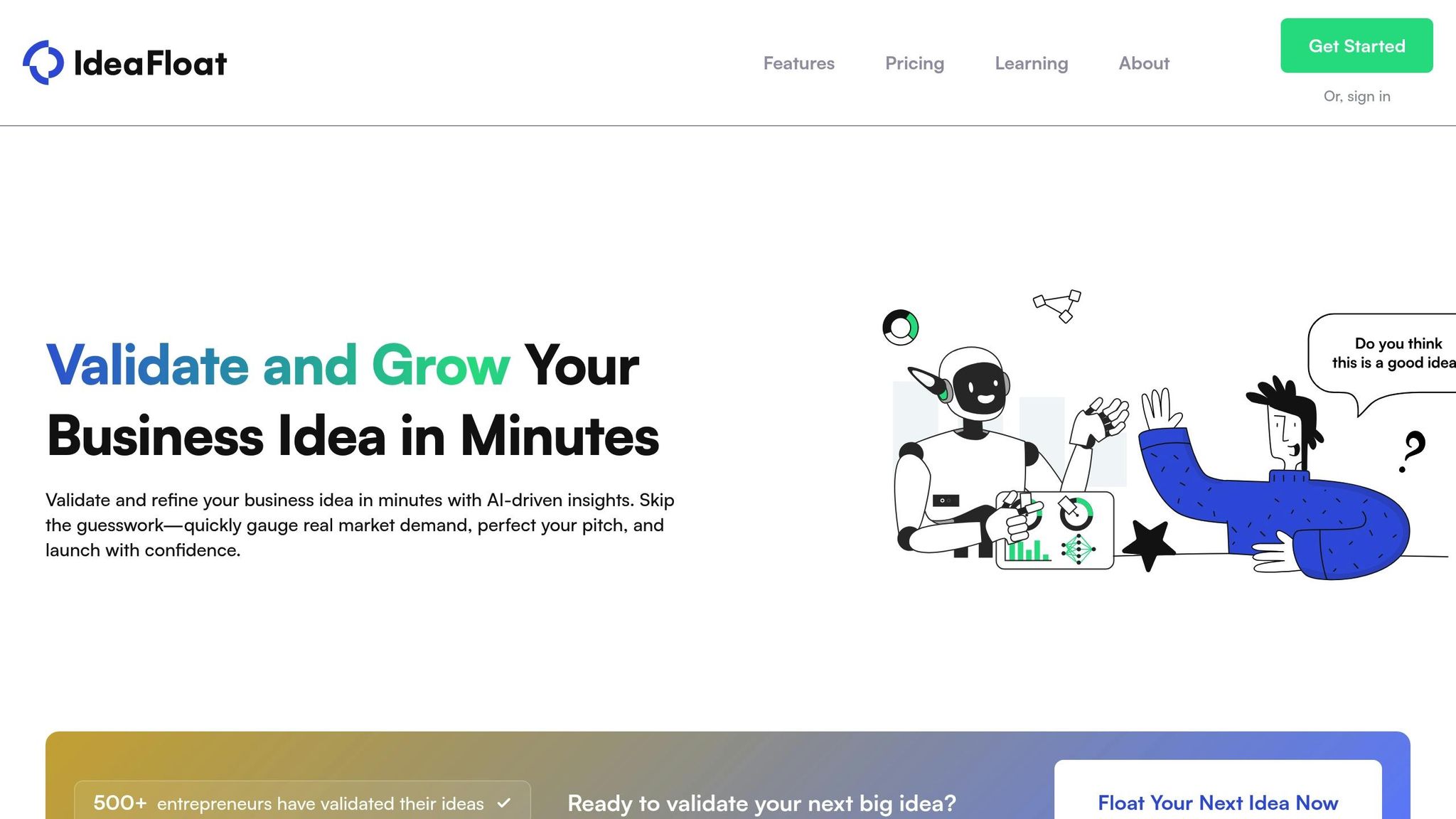
You don’t need experience to start a bookkeeping business. Here’s how you can get started:
- Learn the Basics: Understand bookkeeping tasks like recording transactions, reconciling bank statements, and preparing financial reports. Learn key accounting methods (cash vs. accrual) and terms like assets, liabilities, and equity.
- Get Training: Use free or affordable resources like AccountingCoach or LinkedIn Learning to build your skills. Practice with bookkeeping software like QuickBooks.
- Set Up Your Business: Choose a business structure (sole proprietorship or LLC), register your business name, get an EIN, and open a business bank account. Initial costs range from $500 to $2,000.
- Find Clients: Start by offering services to friends, family, or small businesses. Build a website (under $500) and use online marketing to attract clients.
- Use Tools: Invest in bookkeeping software ($300–$1,200 annually) and automation tools to save time and improve accuracy.
Quick Comparison: Cash vs. Accrual Accounting
| Accounting Method | Best For | Key Features | Requirements |
|---|---|---|---|
| Cash-Basis | Small businesses (<$25M sales) | Records income/expenses when paid | Simple, easy to track |
| Accrual | Large businesses (>$25M sales) | Records income/expenses when earned | GAAP compliance |
Start small, keep learning, and use technology to grow your business.
🚀 How to Start a Bookkeeping Business with *NO ...
Bookkeeping Fundamentals
Learn these key principles to establish a solid foundation for a thriving bookkeeping business.
What Bookkeepers Do
Bookkeepers handle the financial records of businesses, ensuring every monetary transaction is accurately documented. Their main tasks include:
- Recording daily transactions
- Reconciling bank statements
- Managing accounts payable (A/P) and accounts receivable (A/R)
- Preparing basic financial reports
By keeping track of cash flow and generating regular reports, bookkeepers help businesses make informed financial decisions. Many bookkeepers now work remotely, using cloud-based software to maintain digital records. They also ensure compliance with tax laws while offering insights into the company’s financial health.
A strong understanding of transaction recording is essential for mastering core accounting methods.
Basic Accounting Methods
Bookkeeping relies on two primary accounting methods:
| Accounting Method | Best For | Key Features | Requirements |
|---|---|---|---|
| Cash-Basis | Businesses with under $25M in annual sales | Records income and expenses when cash is received or paid | Simple to use and track |
| Accrual | Businesses with over $25M in annual sales | Records income and expenses when earned or incurred | Required for GAAP compliance |
These methods shape how financial records are maintained. For example, if you send an invoice in March but receive payment in April, accrual accounting records the revenue in March, while cash-basis accounting records it in April.
Common Accounting Terms
Familiarity with basic accounting terms is essential for anyone starting in bookkeeping. Here are some key terms you’ll encounter regularly:
Balance Sheet Components:
- Assets: Resources owned by the business, such as cash, equipment, or inventory.
- Liabilities: Debts or obligations, like loans or unpaid bills.
- Equity: The business’s net worth, calculated as assets minus liabilities.
Transaction Categories:
- A/R (Accounts Receivable): Money owed to the business by customers.
- A/P (Accounts Payable): Money the business owes to suppliers.
- Revenue: Income generated from business operations.
- Expenses: Costs incurred to run the business.
The accounting equation - Assets = Liabilities + Owner's Equity - is the foundation of double-entry bookkeeping. This system ensures that every transaction keeps the financial records balanced. A Chart of Accounts organizes transactions into categories, making records easier to manage and reports simpler to generate. Each transaction is assigned to a specific account, creating a clear audit trail for future reference.
Learning Bookkeeping Skills
Once you've got the basics of bookkeeping down, the next step is to build hands-on, practical skills.
Training Options and Courses
You can start learning bookkeeping with a mix of free and affordable resources. For example, AccountingCoach.com, created by Harold Averkamp (CPA, MBA), offers a wide range of free materials, including explanations, quizzes, and exercises to help you build a strong foundation. For a one-time fee, you can upgrade to AccountingCoach Pro, which includes lifetime access to premium features like video tutorials and practice exams.
Another great option is LinkedIn Learning, which offers specialized QuickBooks courses. These cover topics such as:
- Basic software functions
- Troubleshooting common issues
- Optimizing workflows
- Generating financial reports
Software Practice Tips
Getting comfortable with bookkeeping software is key. Here are some tips to help you practice effectively:
- Basic Setup and Navigation: Spend time setting up company files, creating a chart of accounts, and navigating the dashboard. Repetition is your best friend here.
- Transaction Management: Start with simple entries and work your way up to more complex tasks, like handling recurring bills and invoices.
- Automation Features: Explore automation tools to make your workflow smoother. For example, set up bank feeds, create rules for categorizing transactions, and schedule recurring payments.
Practice Exercises
Hands-on practice is the best way to solidify your skills. Here's a practical example:
Rose Green reconciled her bank statement and identified several adjustments. She corrected a double entry of $350, removed $55 for kitchen supplies, and updated missing items, including a $10 overdraft fee, a $50 deposit correction, and a $110 loan repayment. She used a bank reconciliation worksheet to make these updates.
To build your own skills, establish a regular practice routine that includes:
- Recording daily transactions
- Performing monthly bank reconciliations
- Managing petty cash
- Preparing financial statements
- Identifying and correcting errors
These exercises will help you master the fundamentals while ensuring accuracy in your day-to-day bookkeeping tasks.
sbb-itb-08dd11e
Business Setup Steps
Set up your bookkeeping business properly by following these key steps.
Business Structure Options
When starting out, most bookkeepers choose between a sole proprietorship and a limited liability company (LLC). Here's a quick comparison:
| Structure | Setup Cost | Liability Protection | Tax Treatment |
|---|---|---|---|
| Sole Proprietorship | $50–$100 | None | Personal tax rates |
| LLC | $50–$500 | Protects personal assets | Pass-through taxation |
Picking the right structure is critical. An LLC is a popular choice for new bookkeepers because it protects personal assets while allowing profits to flow directly to your personal tax return. This setup also avoids double taxation, making it a practical option for many.
Legal Requirements
Here’s what you’ll need to do to meet legal standards:
-
Choose and Register Your Business Name
Check if your desired name is available through your state's secretary of state website. Registration fees usually fall between $50 and $300. -
Get an EIN
Apply for a free Employer Identification Number (EIN) on the IRS website. This number is necessary for filing taxes and opening a business bank account. -
State Registration
Contact your state’s department of revenue to learn about any additional permits or licenses you might need, especially for financial services.
Initial Costs and Banking
Starting a home-based bookkeeping business involves some upfront expenses:
- Computer setup with dual monitors: $1,000–$1,400
- Printer/scanner: $100–$200
- Business registration and licenses: $50–$400
- Basic office supplies: $100
For banking, most major banks offer business checking accounts with features like online banking, free ACH transfers, integration with bookkeeping software, and mobile check deposit. These accounts make managing your finances much easier.
Getting Your First Clients
Build Your Portfolio
Start small to build credibility. Offer your services to friends, family, or local small businesses. This approach gives you hands-on experience while creating work samples and gathering testimonials. You can also reach out to non-profits or small businesses with free or discounted services to gain experience.
"This first client is your advertising, so spend the time to do your best work." - That Bookkeeper
Once you’ve built a solid portfolio, you’ll be better positioned to attract more clients through targeted marketing efforts.
Marketing Methods
A strong online presence is key to gaining trust and attracting clients. According to research, 93% of customers check online reviews before hiring professional services. To grow your digital footprint:
- Build a professional website that showcases your services and target audience.
- Join local business groups and actively participate in online communities.
- Collaborate with other business service providers to expand your network.
- Share useful tips and insights on social media and other business platforms.
"Find out where the people you want to work with are hanging out, join communities and provide real value." - That Bookkeeper
Make sure to define your value proposition clearly, focusing on how your services benefit potential clients.
Setting Your Rates
Once you start attracting clients, it’s time to figure out your rates. Your pricing should reflect your experience and expertise while remaining competitive. Here’s a simple baseline guide:
| Service Level | Starting Rate | Experienced Rate |
|---|---|---|
| Basic Bookkeeping | $40/hour | Up to $80/hour |
| Transaction-Based | $0.50–$1.25/entry | Varies by volume |
| Income-Based | 1–3% of gross revenue | Based on complexity |
As you gain more experience, you might consider switching to value-based pricing. Don’t forget to account for additional expenses like software subscriptions, equipment upkeep, insurance, taxes, and continuing education. Also, emphasize the perks of hiring an independent contractor - no employee benefits to cover, flexible scheduling, specialized skills, and reduced training costs.
Using Software Tools
Basic Task Automation
Modern bookkeeping software simplifies client account management. A QuickBooks survey found that 48% of accountants plan to invest in automation tools and AI to make their workflows more efficient.
Some key automation features include:
- Bank feed integration
- Receipt scanning
- Invoice automation
- Payment reminders
- Real-time financial reporting
"Review your workflows to identify time-consuming tasks." - Ben Richmond, U.S. Country Manager at Xero
IdeaFloat Business Tools

In addition to basic automation, specialized AI tools can take your workflow to the next level. IdeaFloat offers features like:
- Financial Planning Tools: Build detailed financial frameworks and revenue projections
- Pricing Analysis: Determine competitive rates for your services
- Market Analysis: Gain insights into your target market and potential clients
- Business Plan Generation: Create thorough plans to grow your practice
These tools help you make data-driven decisions that complement your bookkeeping expertise.
Manual vs. Automated Methods
Automation reduces routine tasks and the likelihood of errors compared to manual processes. However, as Aaron Harris, Chief Technology Officer at Sage, points out:
"Imagine you're an accountant: The first time A.I. produces a wrong answer, and that makes it into a financial statement, trust is destroyed. Accounting is very, very precise. Generative A.I. is not."
Professor Martin Mulyadi from Shenandoah University adds:
"We can trust. But then we need to verify."
To maintain accuracy, it's crucial to balance automated and manual methods. Here are some best practices:
- Start with essential tasks like transaction categorization and bank reconciliation
- Regularly review automated outputs for accuracy
- Focus on mastering one platform and earn certifications to showcase your expertise
Conclusion
Key Takeaways
Starting a bookkeeping business without prior experience requires careful preparation and a clear strategy. Here are the main points to keep in mind:
- Develop Your Skills: Invest in professional training and certifications to build your expertise.
- Set Up Your Business: Ensure your business is legally compliant with the right licenses and insurance.
- Plan Your Finances: Allocate $300–$1,200 annually for essential software tools.
- Find Clients: Focus on building an online presence and networking to attract clients.
- Leverage Technology: Use automation tools to streamline your processes while ensuring accuracy.
"Starting a bookkeeping business can be a great opportunity to take control of your career." - Investopedia
These steps provide a solid foundation to begin your journey.
How to Get Started
Follow these steps to launch your bookkeeping business:
-
Professional Training
Enroll in certification programs like AIPB or NACPB to strengthen your credentials and skill set. -
Plan Your Business
Use tools like IdeaFloat's Finance Structure Planning to create a clear financial strategy and set revenue goals. -
Enter the Market
With virtual bookkeeping services in high demand, position yourself by:- Joining industry associations to connect with peers and potential clients.
- Building a portfolio to showcase your skills and past work.
- Setting competitive rates that reflect your expertise.
- Incorporating automation tools to improve efficiency while maintaining high-quality results.
Related posts
Get the newest tips and tricks of starting your business!


